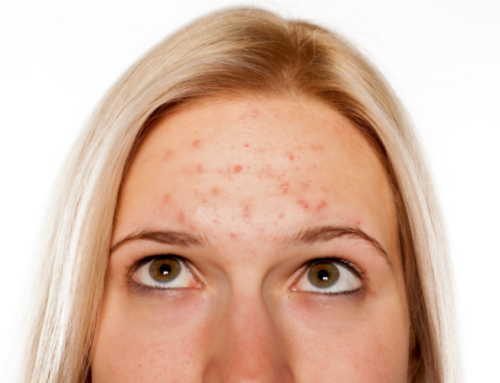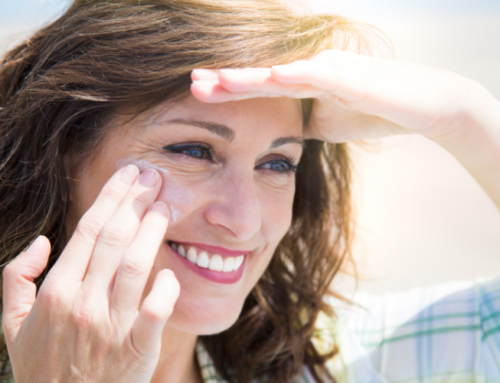Baumann Skin Types with a “P” for “pigmented” have some unique characteristics and concerns. Your skin is predisposed to over-producing the pigment melanin that gives the skin its color. So for you, summertime can mean more dark spots and other signs of sun damage that show up on the surface of your skin. To help you take the best care of your pigmented skin, I’ve outlined some of the biggest myths about your skin type and the true facts behind them.
Do darker skin types need to use sunscreen?
The sun’s rays damage all human skin, regardless of color and Fitzpatrick Skin Type. While dark skin types have more built-in protection (more melanin) than lighter skin tones, sagging, uneven skin pigmentation, inflammation, immunosuppression, skin barrier damage, and skin cancer affect everyone exposed to excessive UV light. In fact, dark skin types tend to get skin sagging from sun exposure. Also, when dark skin types get melanoma, it is more deadly. It is believed that this occurs because darker skin types do not have the redness indicator that tells them when they have had enough sun. They get inflammation, but the melanin pigment can hide the redness. Sun protection is very important in dark skin types!
If you prefer a physical, mineral-based (chemical-free) sunscreen, look for tinted formulas to minimize white streaks on the skin caused by zinc oxide, the active ingredient.
Are age spots are inevitable?
Although often called “age spots,” these unwanted dark spots on your skin are not caused by aging at all — they are caused by the sun! These spots are more common in people in their 50s and older because they are caused by accumulated sun exposure. Daily sunscreen use and avoiding tanning beds and deliberate tanning outside can prevent these spots from showing up on your skin. Even elderly patients who have practiced good sun protection habits do not struggle with “age spots,” more accurately referred to as “solar lentigos.”
What is the difference between a freckle and a sunspot?
Freckles are in part caused by genetics and are typically seen in people with red or blond hair and fair skin. Redheads also have a genetic defect in the Melanocortin-1-receptor gene (MC1R gene) that makes them develop freckles and melanoma. Freckles tend to appear on areas that are exposed to the sun, such as the face, arms, and hands.
Sun spots, or solar lentigos, are caused by sun exposure and are not due to a known genetic defect.
Does exfoliation removes dark spots?
Friction and harsh scrubs, when overused, can cause inflammation and a dark pigmentation issue called post-inflammatory hyperpigmentation. Exfoliation should be used only in conjunction with your doctor’s medical advice on skin care and a regimen designed for your Baumann Skin Type®. Fortunately, there are a number of treatment methods that can effectively reduce dark spots, such as skin lightening ingredients, retinoids, alpha hydroxy acids, and in-office treatments like lasers and chemical peels.
Can melasma be cured?
Melasma is a condition in which the skin has dark patches in sun exposed areas. It is due to hormones, pregnancy, heat, and sun exposure. There is no cure, but there are lifestyle changes that can reduce the risk. Your doctor will prescribe a treatment regimen to help remove the spots and a maintenance regimen to keep the spots from recurring.
Bottom Line
With the right skincare regimen and sun protection habits, taking great care of your pigmented skin type can be much easier than you might think. If you have a specific concern that you’re having trouble managing, such as melasma or post-inflammatory hyperpigmentation, contact our Miami office to discuss the best treatment plan for your needs.
Be sure to follow Baumann Cosmetic on Facebook, Instagram, and YouTube for more skincare tips and advice from Dr. Leslie Baumann.
©2019 Metabeauty, Inc.





